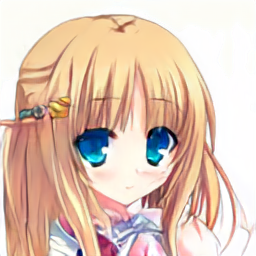PyTorch LightningのGPU訓練で「RuntimeError: Input type (torch.cuda.FloatTensor) and weight type (torch.FloatTensor) should be the same」と怒られた場合

PyTorch LightningはGPUで訓練しても「.to(device)」のようなデバイス指定をしなくていいのが売りですが、「デバイスが異なる」と怒られてハマってしまったので、解決法を示します。
目次
おこったこと
PyTorch Lightningは、PyTorchの訓練のような「.cuda()」や「.to(device)」のような、デバイス指定を明示的に与えなくてもいいのが売りです。(公式サイトより)
しかし、モデルを自分で実装して訓練したところ、PyTorchにありがちな「RuntimeError: Input type (torch.cuda.FloatTensor) and weight type (torch.FloatTensor) should be the same」と怒られてしまい、ハマってしまいました。
詳細に書くと、
- torchvisionやtimmから読み込んだモデルはこれが起こらない
- ただ、自分でモデルを定義すると起こる
というものです。この理由を見ていきます。
環境
- PyTorch 1.11.0+cu113
- PyTorch Lightning 1.5.10
コード
import torch
import torch.nn as nn
import torch.nn.functional as F
from torch.utils.data import DataLoader
import torchvision
import torchmetrics
import pytorch_lightning as pl
class TenLayersModel(pl.LightningModule):
def __init__(self):
super().__init__()
self.layers = []
for i in range(3):
for j in range(3):
if i == 0 and j == 0:
in_ch = 3
elif j == 0:
in_ch = 64 * (2**(i-1))
else:
in_ch = 64*(2**i)
out_ch = 64*(2**i)
self.layers.append(nn.Conv2d(in_ch, out_ch, 3, padding=1))
self.layers.append(nn.BatchNorm2d(out_ch))
self.layers.append(nn.ReLU())
self.layers.append(nn.AdaptiveAvgPool2d((1, 1)))
self.fc = nn.Linear(256, 10)
self.train_acc = torchmetrics.Accuracy()
self.val_acc = torchmetrics.Accuracy()
def forward(self, inputs):
x = inputs
for l in self.layers:
x = l(x)
x = x.view(x.shape[0], 256)
x = self.fc(x)
return x
def configure_optimizers(self):
optimizer = torch.optim.SGD(self.parameters(), 0.1, 0.9)
scheduler = torch.optim.lr_scheduler.MultiStepLR(optimizer, [70, 90], gamma=0.1)
return [optimizer], [scheduler]
def training_step(self, train_batch, batch_idx):
x, y_true = train_batch
y_pred = self.forward(x)
loss = F.cross_entropy(y_pred, y_true)
y_pred_label = torch.argmax(y_pred, dim=-1)
self.train_acc.update(y_pred_label, y_true)
self.log("train_loss", loss, prog_bar=True, logger=True)
return loss
def validation_step(self, val_batch, batch_idx):
x, y_true = val_batch
y_pred = self.forward(x)
loss = F.cross_entropy(y_pred, y_true)
y_pred_label = torch.argmax(y_pred, dim=-1)
self.val_acc.update(y_pred_label, y_true)
self.log("val_loss", loss, prog_bar=False, logger=True)
return loss
def validation_epoch_end(self, outputs):
self.log("val_acc", self.val_acc.compute(), prog_bar=True, logger=True)
self.log("train_acc", self.val_acc.compute(), prog_bar=True, logger=True)
self.train_acc.reset()
self.val_acc.reset()
class MyDataModule(pl.LightningDataModule):
def __init__(self):
super().__init__()
def prepare_data(self):
self.train_dataset = torchvision.datasets.CIFAR10(
"./data", train=True, download=True,
transform=torchvision.transforms.ToTensor())
self.val_dataset = torchvision.datasets.CIFAR10(
"./data", train=False, download=True,
transform=torchvision.transforms.ToTensor())
def train_dataloader(self):
return DataLoader(self.train_dataset, batch_size=256, num_workers=4, shuffle=True)
def val_dataloader(self):
return DataLoader(self.val_dataset, batch_size=256, num_workers=4, shuffle=False)
def main():
model = TenLayersModel()
cifar = MyDataModule()
logger_csv = pl.loggers.CSVLogger("outputs", name="lightning_logs_csv")
logger_tb = pl.loggers.TensorBoardLogger("outputs", name="lightning_logs_tb")
trainer = pl.Trainer(gpus=[1], max_epochs=5)
trainer.fit(model, cifar)
if __name__ == "__main__":
main()
エラー
File "e:\...\train.py", line 56, in validation_step
y_pred = self.forward(x)
File "e:\...\train.py", line 34, in forward
x = l(x)
File "C:\Users\...\Roaming\Python\Python37\site-packages\torch\nn\modules\module.py", line 1110, in _call_impl
return forward_call(*input, **kwargs)
File "C:\Users\...\AppData\Roaming\Python\Python37\site-packages\torch\nn\modules\conv.py", line 447, in forward
return self._conv_forward(input, self.weight, self.bias)
File "C:\Users\...\AppData\Roaming\Python\Python37\site-packages\torch\nn\modules\conv.py", line 444, in _conv_forward
self.padding, self.dilation, self.groups)
RuntimeError: Input type (torch.cuda.FloatTensor) and weight type (torch.FloatTensor) should be the same
解決法:レイヤーをPythonのリストではなく、nn.ModuleListに変える
直接的な原因は、TenLayersModelのコンストラクタ内のこの行です。
# 変更前
self.layers = []
これをnn.ModuleListに変えるだけでエラー消えます。nn.ModuleListでもリスト同様appendで追加できます。
# 変更後
self.layers = nn.ModuleList()
Lightning Moduleの中で「.cuda()」のようなGPU用のモデルに変換する処理が自動的に走っているのですが、Pythonのリストでは対応していなく、nn.ModuleListにすると対応してくれるのが理由として考えられます。自動変換に対応しているコレクションを使えば、PyTorch Lightningでも明示的に.cuda()しなくてOKです。
解決したのでめでたしめでたし。ただ初見でこのエラー出たときはドキッととしました。
Shikoan's ML Blogの中の人が運営しているサークル「じゅ~しぃ~すくりぷと」の本のご案内
技術書コーナー
北海道の駅巡りコーナー

